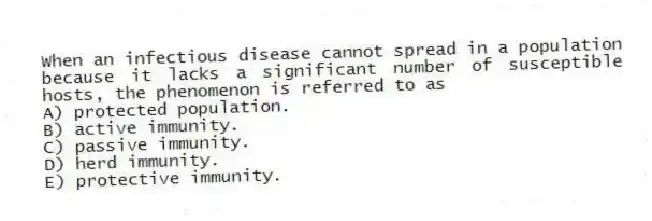
When an infectious disease cannot spread in a population because it lacks a significant number of susceptible hosts, the phenomenon is referred to as
A) protected population.
B) active immunity.
C) passive immunity.
D) herd immunity.
E) protective immunity.
Correct Answer:
Verified
Q23: The publication of the CDC that reports
Q24: The amount of infecting agent received by
Q25: So far, the only disease that has
Q27: Because of the natural evolution of microorganisms,
Q29: The World Health Organization (WHO) is part
Q30: WHO has targeted for elimination of
A) polio.
B)
Q31: An experimental study in which neither the
Q32: If the number of people who become
Q33: Droplet nuclei typically travel no farther from
Q75: The period of time between exposure to
Unlock this Answer For Free Now!
View this answer and more for free by performing one of the following actions

Scan the QR code to install the App and get 2 free unlocks

Unlock quizzes for free by uploading documents